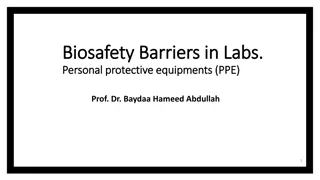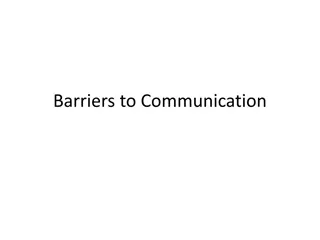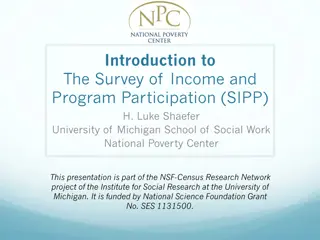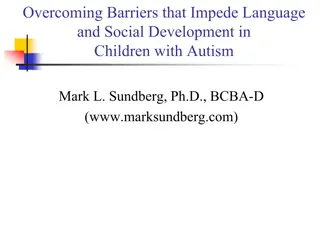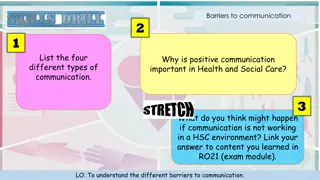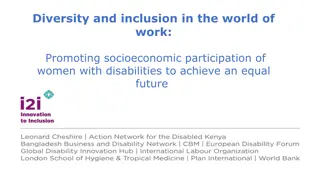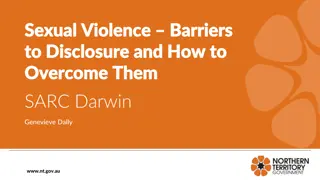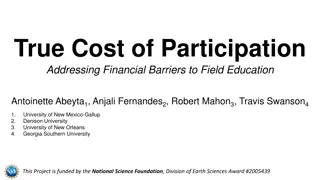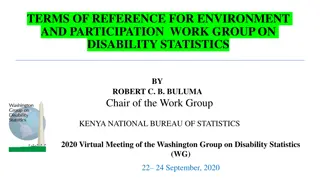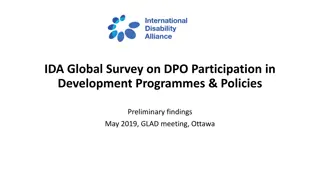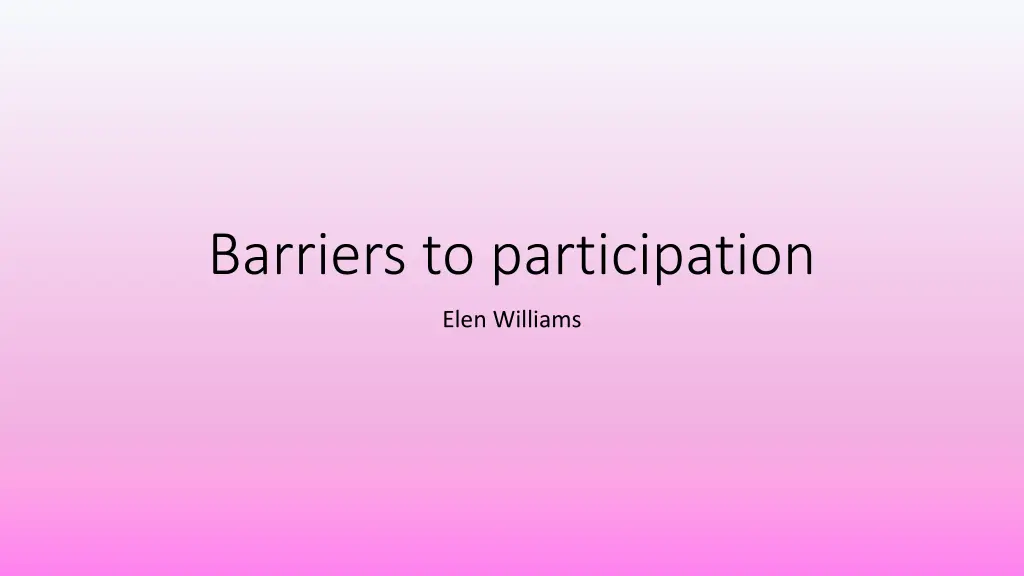
Challenges Faced by Diverse Groups in Sports Participation
Explore barriers to sports participation faced by individuals over 50, women, and those with disabilities due to cultural, historical, economic, educational, and social factors. Discover how societal norms and lack of resources impact their involvement in physical activities.
Download Presentation

Please find below an Image/Link to download the presentation.
The content on the website is provided AS IS for your information and personal use only. It may not be sold, licensed, or shared on other websites without obtaining consent from the author. If you encounter any issues during the download, it is possible that the publisher has removed the file from their server.
You are allowed to download the files provided on this website for personal or commercial use, subject to the condition that they are used lawfully. All files are the property of their respective owners.
The content on the website is provided AS IS for your information and personal use only. It may not be sold, licensed, or shared on other websites without obtaining consent from the author.
E N D
Presentation Transcript
Barriers to participation Elen Williams
50+ Cultural- At 50+ its likely to stop playing sports as its not the norm and you cant play at the standard you once did so its better off not doing it at all. For example a boxer may retire at 40 as they feel out of place with all the new players coming up. There is a significant drop off in participation once people stop competing at a standard they were accustomed to. This is amongst those who have been life long participants. A significant portion of the population have not taken part in sport or physical activity and it is difficult for them to start something new at this later stage of life. Historical- Traditionally older people have not participated in competitive sport or physical activity. This is often still the case in more socio-economically deprived areas. Economic- Older people can sometimes work on a part time basis or rely on a pension. This can have a significant effect on expendable income that could preclude them from taking part in sports that require expensive equipment, memberships or fees. Educational- People 50+ when in school didn t have specialist coaching or the opportunities we have today as well as a variety of sports to take part in it was mostly rugby, football and fitness. Social- At this age many people feel lonely as family and friends have died or live far away this can lead to mental health, so sports such as walking football and group walks help to keep they active but also reduce depression as they are keeping active whilst participating at the right level physical activity as well as making friends and talking to people in the social environment where they all have something in common.
Women Cultural- Women struggle to participate in sport and physical activities due to cultural held beliefs that women shouldn t take part in it as its male dominated. Culturally women are seen a the one who takes care of the family, in religions such as Islam Muslim women are frowned upon if they take off there traditional clothing such as the burka as they belief only there husbands should see them, this norm makes it very difficult for women to participate in sport. Historical- Women haven t been participating in sport as women couldn t participate with the men. Historically sports weren t traditionally played by women and there were no women sports such as netball as there was a lack of interest in women playing sports because they weren t see as strong or as able as the men. Economic- Women are known to payed less then men and are more likely to be in part time work due to lack of child care , this makes it difficult for women to participate in sport as they have no extra money to pay for memberships or fees for gyms or training sessions. Educational- Women have struggling to be a part of the sporting world as it isn t till recently that schemes in school have been but into place to encourage women to play sports from a younger age such as This girl can. Older women use to not have to participate in P.E they could do arts and crafts such as sewing and knitting because tis was more of a norm so now they lack the ability they feel they need to join a club. Teachers are also not as educated with knowledge of the sport or influence women to compete at a high standard. Social- Women may struggle to take part in sport and being social because of lack of childcare. They may also use their spare time supporting their own children in getting to clubs and sporting activities resulting in their inability to participate. This could be changed by having mum and child clubs on at the same time so both can participate.Free child care would also help. Mothers would be able to pay for their sport session without the cost being too great in trying to pay for childcare.
Disabilities Cultural- Culturally the norm is that people with disabilities should not take part in sport. Currently able bodied sports are separated from disabled bodied sports. For example, in places like Sri Lanka, countries do not have the resources or money to fund sporting events. There is a lack of money in the household and the culture means the government do not invest or support them so they rely on charity and in some cases are sent to orphanages because their family cannot care for them. Historical- In the past people affected by disability have not really participated fully in sport. However, following the Paralympic Games held in London 2012 the profile of disabled participants in sport was raised. The ticket pricing for the games meant that it was more accessible to the general public. More recently, Prince Harry and his Invictus Games has raised the profile of disabled military men and women participating at high levels. Economic-It may be that cost would prevent disabled people accessing sports. Prosthetic limbs specially designed for sport, or disabled wheelchairs cost a lot of money and are not provided by the NHS. Charities such as ***** were profiled on Pride of Britain showing that children accessing artificial limbs is often funded by parents or charity. Also because disabled sports are not as common as able bodied sports, sessions may incur travel costs or distance as well as have less sessions on offer. Educational- Due to the lack of disability in schools, there are not many specialised teachers who can adapt sessions to meet the needs of disabled children so tend to get them to sit out or go and do other work. To overcome this you could link up with resources and expertise in Special schools so that staff have better training and ideas to ensure disabled children don t get left out or isolated. Social- socially, disabled people are isolated in sport as there are limited resources and specialists available to get them involved in sport or other social situations like activity clubs. Support groups can help disabled children in helping get them out to attend activities and meet new people. Being able to get out and socialise is important to their wellbeing and reduces poor mental health issues.



